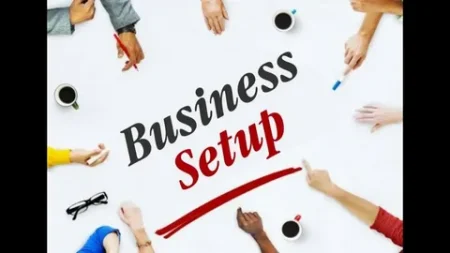A well-outfitted workforce isn’t just a reflection of professionalism—it’s a cornerstone of operational efficiency and workplace safety. For construction, manufacturing, logistics, and facility management organizations, ensuring every team member has the right gear and supplies can reduce injury risk, support regulatory compliance, and strengthen brand identity.
Outfitting your team involves more than providing standard-issue clothing and cleaning products. It requires thoughtful coordination across categories like high visibility clothing, consistent janitorial supply, and branding through custom screen printing and custom embroidery. When approached strategically, these elements create a productive and polished work environment.
This guide outlines a complete framework for sourcing and managing team apparel and facility supplies. Whether you’re outfitting a small warehouse team or a multi-site operation, we’ll cover what to include, how to customize gear for safety and identity, and how to balance quality, consistency, and cost-effectiveness.
Defining Your Team’s Operational Needs
Before ordering any apparel or facility supplies, organizations need to evaluate the specific needs of their workforce. Start by answering:
- What are the safety requirements based on job roles?
- Do certain positions require different visibility ratings or cleaning responsibilities?
- Is there a need for uniform branding across departments or locations?
- How frequently will gear and supplies need to be replenished?
Understanding these dynamics lays the foundation for building an effective outfitting plan. For instance, outdoor crews may require hi-vis clothing, while indoor staff might focus more on hygiene and presentation.
Job-Specific Requirements
A one-size-fits-all approach rarely works. Electricians, forklift operators, janitorial staff, and machine operators each have unique safety and uniform needs. Creating a matrix by job role ensures the right items are ordered consistently and helps avoid wasteful spending.
Essential Apparel: From Hi-Vis Clothing to Branded Uniforms
Outfitting begins with clothing—and in many industries, safety apparel is legally required. Whether dictated by OSHA, ANSI standards, or internal protocols, visible and protective garments are non-negotiable for many roles.
Choosing the Right Hi-Vis Clothing
When outfitting for visibility, consider:
- Color: Fluorescent yellow-green, orange-red, and bright colors improve daytime visibility.
- Reflectivity: Retroreflective tape helps workers stand out in low-light or nighttime conditions.
- Class Ratings: ANSI Class 1, 2, and 3 standards are based on work environment risk factors.
Beyond safety, uniforms play a role in accountability and unity. That’s where company branding enters the equation.
Customizing with Branding Elements
Using a custom printing service, you can apply company logos, department names, or job titles to gear like shirts, vests, and jackets. For higher-end or long-lasting garments like polos and outerwear, embroidered workwear offers a more durable and premium alternative.
Branding also helps with identification in mixed teams or multi-contractor job sites. It simplifies accountability and builds customer trust during site visits.
Facility Supplies: Keeping Workspaces Clean and Safe
Outfitting your team isn’t complete without supporting a clean and functional work environment. The role of janitorial products is often underestimated, but essential for safety and morale.
Must-Have Categories for Every Operation
- Surface Disinfectants: For shared equipment and common areas.
- Degreasers and Industrial Cleaners: Particularly important for manufacturing facilities.
- Spill Control Products: To prevent slips and regulatory fines.
- Restroom and Breakroom Stock: Toilet paper, soap, paper towels, and sanitizers.
Whether your teams clean in-house or rely on outsourced services, maintaining an adequate inventory of cleaning supplies supports hygiene standards and reflects your company’s professionalism.
Creating a Uniform Look: Balancing Form and Function
Uniforms are more than branding tools—they’re functional pieces of gear that protect workers and unify teams. Yet striking the right balance between form and function is where many businesses fall short.
What to Prioritize
- Comfort: Uniforms must allow full range of motion for active roles.
- Durability: Repeated laundering and exposure to the elements call for tough fabrics.
- Breathability: Lightweight fabrics improve comfort, especially in hot or enclosed spaces.
- Placement of Branding: Logos shouldn’t obstruct reflective tape or safety features.
Work with suppliers who understand both apparel construction and safety requirements to avoid costly mistakes in logo placement or garment selection.
Tradeoffs: Customization vs. Scalability
While customization helps promote brand identity and improve role clarity, it also creates complexity in ordering and inventory management.
| Factor | Advantage | Consideration |
| Custom printing | Fast, cost-effective for bulk orders | May fade faster with repeated washing |
| Embroidery | Long-lasting, professional appearance | More expensive, limited to thicker garments |
| Unisex sizes | Easier to stock and reorder | May not fit all body types well |
| Role-specific outfits | Increases safety and professionalism | Increases SKUs and ordering complexity |
Choose where full customization adds true value (e.g., customer-facing roles or safety-critical apparel) and where standardization can reduce costs.
Vendor Selection and Supply Coordination
Consolidating your apparel and supply needs under one vendor can simplify your operations dramatically. Look for suppliers that:
- Offer both hi-vis gear and branded uniform customization
- Provide a wide range of cleaning supplies
- Allow for recurring or auto-ship options
- Have in-house custom printing service and embroidery capabilities
This helps reduce fragmentation, improve consistency across job sites, and streamline procurement reporting.
Managing Inventory for Apparel and Supplies
Having the right items on hand is crucial, but overstocking can waste space and tie up budget. A well-structured inventory plan prevents delays in uniform distribution or hygiene compliance.
Best Practices
- Baseline Stocking Levels: Based on average team size and turnover rates.
- Usage Monitoring: Track usage per role or department to forecast reorders.
- Seasonal Adjustments: Rotate stock to match weather needs (e.g., long-sleeve hi-vis in winter).
- Labeling Systems: Critical if you stock different sizes, roles, or customization tiers.
Aligning your outfitting inventory with other procurement cycles (e.g., quarterly budget reviews) helps you maintain a steady supply while avoiding waste.
Onboarding and Gear Allocation
A complete outfitting strategy must include an onboarding checklist. Each new hire should receive a consistent set of apparel and instructions for care, along with access to the cleaning resources needed for their station.
Sample Onboarding Kit
- 2–3 branded work shirts (screen-printed or embroidered)
- 1 high-visibility vest or jacket (if required)
- PPE as needed (gloves, eye protection)
- Locker access and cleaning supply station orientation
- Hygiene training (especially for janitorial or shared equipment roles)
Standardizing this process ensures every team member is prepared and aligned from day one.
Monitoring and Feedback: Staying Ahead of Wear and Tear
Once outfitting is complete, regular reviews are essential. Check for:
- Faded or damaged hi-vis clothing
- Worn-down embroidered workwear
- Missing or outdated branded garments
- Shortages in janitorial products
Encourage team feedback on comfort, usability, and fit. This helps refine future orders and signals to employees that their safety and comfort are a priority.
Building a Culture Around Appearance and Safety
Outfitting is only practical when it’s supported by leadership. Managers should model appropriate attire and cleaning standards and reinforce the importance of presentation and safety.
- Display dress code and hygiene standards in breakrooms and locker areas.
- Rotate facility inspections and uniform spot-checks.
- Celebrate teams that consistently meet outfitting and appearance goals.
When team members see the link between their gear, safety, and company image, they will likely maintain high standards independently.
Conclusion: A Unified Approach to Safety and Appearance
Outfitting your team goes far beyond just providing gear. It’s a strategic process that connects safety, cleanliness, branding, and morale. By addressing every detail—from high-visibility clothing and janitorial supply orders to custom screen printing and custom embroidery—you create a workplace that runs smoother, looks more professional, and supports your long-term goals.
The rest of your strategy should build on these basics using scalable solutions such as inventory planning, centralized procurement, and consistent onboarding practices. Ultimately, when teams are well-outfitted, they’re safer and more efficient and a visible, living representation of your company’s values.





